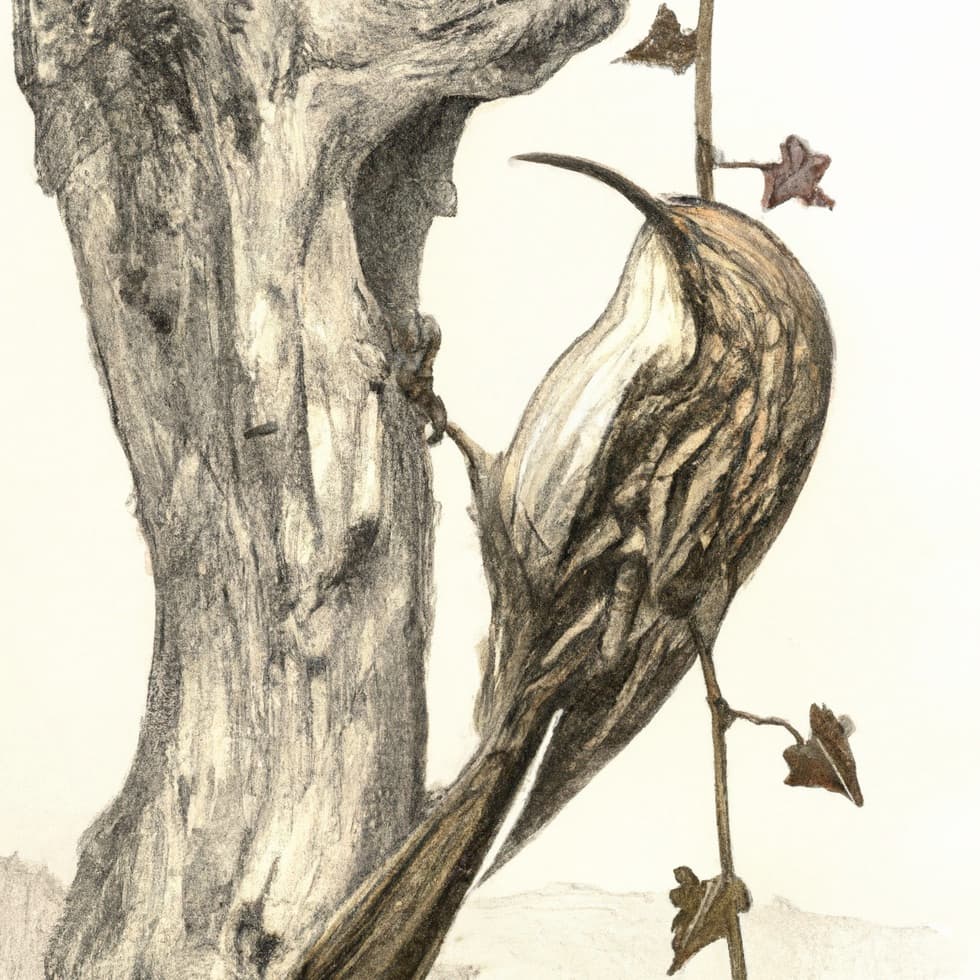
Welcome, fellow bird enthusiasts! Today, we will be taking a closer look at one of nature’s most fascinating creatures – the Tree Creeper! This unique bird is well-known for its ability to effortlessly climb up tree trunks in search of insects and grubs. With its distinctive, curved bill and intricate feather patterns, the Tree Creeper is a true marvel of the avian world. So, let’s dive right in and explore 27 curious facts about this incredible bird!
27 Curious Facts about the Tree Creeper
- The Tree Creeper belongs to the family Certhiidae, which includes several other species of treecreepers.
- The scientific name for the Tree Creeper is Certhia familiaris.
- The Tree Creeper is a small bird, typically measuring between 12-14 cm in length.
- These birds are found in Europe, Asia, and North Africa.
- Tree creepers are masters of camouflage and have intricate patterns on their feathers to help them blend in with the bark of trees.
- Tree creepers have a unique feeding habit, using their long, curved bills to probe under the bark of trees in search of insects and grubs.
- These birds are primarily active during the day.
- The Tree Creeper has a loud, high-pitched call that can often be heard echoing through the forests where they reside.
- Tree creepers are known to roost in tree cavities or crevices in tree bark.
- These birds are monogamous and form lifelong bonds with their mates.
- The collective noun for a group of Tree Creepers is a ‘creep’ or a ‘spiral’.
- Tree creepers are capable of clinging to the side of a tree trunk upside down while foraging for food.
- The average lifespan of a Tree Creeper is between 2-3 years.
- These birds are non-migratory and tend to stay in one area all year round.
- In some cultures, Tree Creepers are seen as a symbol of good luck.
- The Tree Creeper’s wings are relatively short, which allows them to manoeuvre easily in tight spaces.
- Tree creepers are known to store food for later consumption.
- These birds have a specialised toe arrangement that allows them to grip tightly to tree bark.
- The Tree Creeper’s breeding season typically occurs between April and June.
- Tree creepers are not known to be aggressive towards other bird species.
- The Tree Creeper is a protected species in many parts of the world.
- These birds have a very distinctive, undulating flight pattern.
- Tree creepers are able to detect insect larvae that are buried deep within tree bark.
- These birds are known to take frequent baths in shallow streams or puddles.
- The Tree Creeper is a non-territorial bird, meaning they do not defend a specific area.
- Larger birds often prey upon these birds, such as hawks and owls.
- The Tree Creeper is a beloved bird among many birdwatchers and nature enthusiasts.
Where to Find the Tree Creeper
Tree creepers can be found in various parts of the world, including Europe, Asia, and North Africa. They are particularly prevalent in the woodlands and forests of these regions, where they can be found scampering up tree trunks in search of insects and grubs. In Europe, Tree Creeper can be found in countries such as the United Kingdom, Germany, and France. In Asia, they are commonly found in countries such as Japan, China, and Russia. In North Africa, the Tree Creeper can be found in countries such as Morocco and Algeria. Their preferred habitat is dense woodlands, with a mix of deciduous and coniferous trees, where they can find plenty of hiding spots and food sources.
Feeding the Tree Creeper
Feeding Tree Creepers in the wild is not recommended, as they have a specific diet of insects and grubs found in tree bark. However, if you are interested in attracting Tree Creepers to your garden, you can provide them with nesting boxes that mimic their natural habitat. These boxes should be placed in a quiet area of your garden, preferably near trees or wooded areas. You can also provide food sources such as mealworms and suet cakes, which can be purchased at most bird feeders.
Final Thoughts
In conclusion, the Tree Creeper is a fascinating bird that has captured the hearts of bird watchers and nature enthusiasts alike. From their unique feeding habits to their intricate feather patterns, these birds are a true marvel of the avian world. If you are lucky enough to catch a glimpse of one of these elusive birds on your next woodland walk, take a moment to appreciate their beauty and unique behaviours. With their undulating flight patterns and distinctive calls, Tree Creepers are sure to make a lasting impression on anyone who has the pleasure of encountering them in the wild.